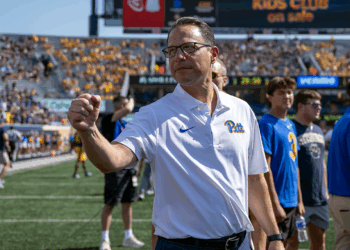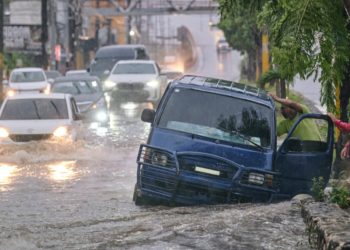The mothers arrived at the emergency feeding center all day long, their faces tight with anxiety, their children limp in their arms. Nurses quickly weighed each child and checked for infection. The frailest were given tubes threaded up their noses and down into their bellies, for a slow drip of fortified milk. Those a little bigger were placed in a bed in a packed room for feeding with therapeutic peanut paste. The ones with rashes, fevers and deep, hacking coughs — potential diphtheria, measles, whooping cough, maybe cholera — were tucked into bare isolation rooms.
It wasn’t like this even six months ago.
Here in Baidoa, a city in southern Somalia, community health workers used to go door to door looking for children who were too thin or sick. Care was swift, and free, at rudimentary clinics set up in camps and neighborhoods. Families received parcels of special foods packed with nutrients. As a result, it was rare for children to deteriorate to the point they needed to be transported to a center for 24-hour care.
But the community health clinics, and emergency food, were paid for by the United States, through its Agency for International Development. When the Trump administration dismantled the agency and ended vast swaths of foreign assistance to the world’s poorest countries, much of the food aid and health care for children across Somalia were abruptly cut off.
So now more children are arriving at emergency centers, and they are sicker and thinner than ever. Their vertebrae poke like the teeth of a comb through the translucent skin of their backs.
The swift American exit from Somalia — a country gripped by twin menaces of recurring drought and Islamist insurgency, where the United States has long seen a strong geopolitical reason for partnership — has created chaos all through the country’s health system.
The aid organization Save the Children was operating 128 community health facilities across Somalia, and had to close 47 of them in March, leaving more than 300,000 people without health and nutrition services. The International Medical Corps closed medical centers in four regions of the country, including Baidoa, a sprawling, sun-bleached city of 750,000 hosting some 770,000 displaced people. U.S. support for the United Nations’ World Food Programme, which supplies fortified milks and therapeutic peanut paste for malnourished children, was reduced.
The United States sent an average of $450 million a year in humanitarian assistance to Somalia over the past decade, including $481 million in 2020, the final year of the first Trump administration. Internal State Department data reviewed by The New York Times shows that in the 2025 fiscal year, which ended on Sept. 30, about $128 million had been sent to Somalia.
The State Department said on Oct. 9 that the Trump administration had approved $14.9 million in funding for Somalia. In an emailed statement, it said both military and humanitarian assistance to Somalia continued.
“The United States remains committed to working with Somalia to counter terrorist threats and address shared security concerns,” the statement said.
The United States has been by far the largest donor to Somalia, and the Trump administration has argued that the United States has been contributing more than its fair share of aid around the world. “The State Department will continue its mission to encourage other donors, including governments and the private sector, to come up with sustainable solutions for those most in need,” the statement said.
Dr. Binyam Gebru, Save the Children’s director in Somalia, and his colleagues had to make agonizing choices after the U.S.A.I.D. grant they had received for the past eight years, which averaged about $15 million a year, was not renewed. In Baidoa the organization ran a feeding program that delivered fortified food to all the children and pregnant and breastfeeding women in the vast camps of displaced people that surround the town. Either the community feeding program or the emergency centers would have to shut down.
They could stave off severe illness — and a lifetime of cognitive and physical impairments — for many more children if they maintained the community feeding program, which costs much less than inpatient emergency treatment. But for the sickest children, the emergency center is the difference between life and death.
“Of course lifesaving intervention should be prioritized, and that’s what we have done,” Dr. Gebru said. “But it’s devastating. You know that in the community, you could treat a child for a few dollars, and very quickly.”
Save the Children has even had to close some emergency centers; the organization has tried to maintain at least one in each region.
In the aftermath of the United States’ exit, Somalia has seen a decline in funding from other countries, too. “Most of our key donors — the Dutch, the Germans, the Brits — it’s all coming down,” said Crispen Rukasha, the head of the U.N.’s Office for the Coordination of Humanitarian Affairs in Somalia. Britain was the second-largest donor to health in Somalia, but will end its funding for health care in March.
The World Food Programme said that starting next month, it would be forced to reduce the number of people who receive emergency food assistance in Somalia to just 350,000, down from 1.1 million in August — fewer than one in every 10 people who are in need of food aid for survival.
The need for help is intensifying: the grip of the drought has been growing each year. A quarter of Somalia’s 16 million people are displaced. In September, a U.N.-backed group of experts who monitor world hunger upgraded its level of warning for Somalia, saying 3.4 million Somalis were experiencing “crisis” levels of food insecurity and that the number would most likely increase by a million people by the end of this year.
The area around Baidoa once produced half the country’s food, but 34 years of civil war has destroyed farms. Dr. Gebru said that in the past, his organization has been able to direct resources into hard-hit communities, and provide a buffer when famine loomed. Now, he said, they can only watch it come.
In a congested camp on the city’s edge, Owliyo Ali has worried for some time that her youngest child, a son, is much too light for an 18-month-old. When his older siblings were babies, she relied on regular supplies of fortified foods that she picked up at the health center a few minutes’ walk from her home. But now that center is closed.
Save the Children mobile teams still come to the camp a couple of times a week for a few hours, but they don’t bring as much food.
“Usually they run out before I get any for him,” she said.
A few weeks ago the child had diarrhea and a high fever, developed a measles rash and grew too weak even to cry. She wanted to take him to a clinic, but the only option now is the hospital in town — a $3 taxi ride away, three times more than the $1 her husband earns for a day’s work. The couple borrowed from neighbors, and the boy was admitted for four days; weeks later, he was still listless and glassy-eyed.
Ms. Ali and her family fled their home eight years ago, after their harvests failed repeatedly. They now live in a shack made of sticks and sheet metal. Ms. Ali is pregnant, and she was also relying on food from the health center. Research shows that in areas with high rates of malnutrition, providing pregnant women with fortified foods can have a significant positive effect on their children’s growth and health. But that food ran out months ago, she said.
At Bay Regional Hospital, admissions for malnutrition were up by 40 percent by July compared with January, said Dr. Abdullahi Yusuf, the facility’s medical director. They used to see children with diphtheria once or twice a year, but there have been 50 cases in the last three months. Children who come are much sicker, he said, and pregnant women arrive with life-threatening conditions.
“Previously we had early referrals, from community health workers — now they come late and the complications are much more severe, and so the deaths are higher,” he said.
Pediatric and obstetric staff members at the hospital are paid for and supplies are purchased by Doctors Without Borders, one of the few organizations which accepts no funding from governments and thus has been able to keep operating. But Dr. Yusuf said the situation was not sustainable: A ward for 50 children sometimes has 90 crowded into it, he said.
Somalia’s national government collected just $350 million in total revenue last year. Almost all of that was spent on security, as the government struggles against two militant organizations that control about a third of the national territory. The government pays for about 4 percent of all health spending in the country; foreign donors cover 60 percent and the rest is out of pocket.
Dr. Ibrahim Adam Somow, director general of the state health ministry, said he and his colleagues were stunned when they began to receive emails from one international partner after another, announcing that their funding had been terminated and they were leaving. Clinics and feeding centers closed overnight.
Keeping skilled staff members to run childbirth facilities has been one of the priorities for spending their limited funds, he said. Keeping at least one outpatient center for children in each area is another.
“Our priority is to reach the child who lives under a tree so that he or she survives and becomes tomorrow’s leader,” he said. Dr. Somow, who recently earned a doctorate in public health, was once one of those children himself: he remembers waiting under a tree to be immunized in a vaccination blitz.
At 40, he’s proof of progress, he said, but Somalia is a long way from being able to cope on its own. “It is like rebuilding a building: everyone must bring a brick,” he said.
Despite the challenges, Somalia had made public health gains in recent years, bolstered significantly by the U.S. funding. The number of child and maternal deaths was slowly falling. Vaccination coverage was creeping up, as immunization teams made forays into areas that had been controlled by insurgents.
“This is a country riddled with crises, and yet amid all this, there were still improvements,” Dr. Gebru said. “Good things were happening. But one such aid cut or one huge crisis will reverse everything we have done for years.”
Now one problem is driving the next, he said: malnourished children are more vulnerable to disease. They are displaced by drought and war, arriving in congested camps where they are packed in next to other underfed children, who also haven’t had the chance to be immunized.
Somalia’s weak state has created openings for actors intent on regional destabilization, a process the United States has historically tried to counter with large investments in food and military aid. An Al Qaeda-affiliated organization called Al Shabab controls about a third of the country’s territory, while an offshoot of the Islamic State has carried out attacks across the country from a base in the north.
The humanitarian assistance served a hearts-and-minds purpose, and bolstered the image of the United States in communities where there had been intermittent U.S. military activity confronting the militant groups.
Nutrition programs also lead to a more stable and prosperous country, said Meftuh Omer, who directs child survival work for Save the Children in Somalia. “The long-term effects of malnutrition are contributing to the conflict: there is cognitive impact, performance in school is poor, then the only option young people face is the easy way of joining a militia,” he said.
Save the Children has used funding from sources such as individual donors to keep some operations in Somalia going, but Dr. Gebru said those funds would stretch no further than the end of the year. Just as food supplies run out, the organization will have to close the last of its emergency centers.
Amy Schoenfeld Walker contributed reporting from New York.
Stephanie Nolen is a global health reporter for The Times.
The post America’s Retreat From Aid Is Devastating Somalia’s Health System appeared first on New York Times.




